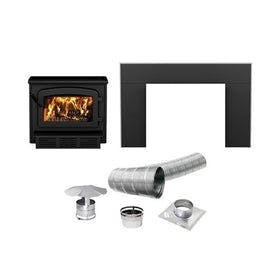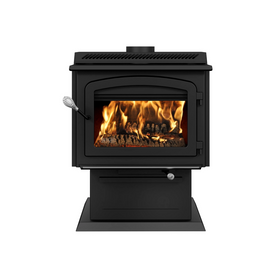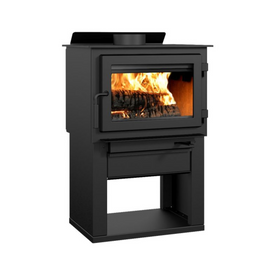
Net Zero Homes Are More Affordable Than You Think
Last Updated: Mar 19, 2025Perhaps you've wanted to build a highly energy-efficient home but have been afraid of its drastically increased cost over a conventionally built one. If that is the case, the Rocky Mountain Institute (RMI) has a report for you called "The Economics of Zero-Energy Homes, Single Family Insights." RMI is an American nonprofit dedicated to research, publication, consulting, and lecturing on sustainability. Rise has previously referred to their findings in articles like Why Home Energy Expenses Should Be Reported to Home Buyers.
Below, we'll summarize some of the most salient points of RMI's 31-page report. However, to increase the reader's accessibility to its contents, we'll start with some definitions.
Table of Contents
- What Is a Zero-Energy (ZE) Home and How Does It Differ From a Zero-Energy Ready (ZER) Home?
- What Does It Take to Choose Zero Energy?
- The Four Homeowner "Cost Thresholds"
- How Builders and Politicians Can Help
- Now Is the Time
What Is a Zero-Energy (ZE) Home and How Does It Differ From a Zero-Energy Ready (ZER) Home?
RMI defines a ZE home as a highly energy-efficient home that produces as much renewable energy as it consumes annually. For the current RMI report, renewable energy produced is solar-powered electricity. In contrast, according to the US Department of Energy, a ZER home is a "high-performance home, so energy efficient all or most annual energy can be offset with renewable energy."
A ZER home can become a ZE home, for example, by installing solar photovoltaic (PV) panels. "Although not all buildings can be built to ZE standards," the report says, "all buildings can be built to ZER standards." But why would someone build a ZER home instead of a ZE home?
RMI says a builder may choose to build a ZER home for several reasons, including a building site where there is a lot of shade or a roof design unconducive to installing solar PV panels. However, the most common reason may be budget constraints on the part of the builder or the buyer or the preference of either party to wait until solar energy prices drop in the future. In any case, ZER can be seen as having a bit of "future-proofing." It allows for other renewable energy solutions, like getting on to a community solar grid or enrolling in a utility company's renewable power purchase options. The EPA defines this as "a range of supply options allowing consumers to select a customized green power procurement approach that best meets their energy and environmental objectives are given their unique financial, operational, and policy situations." What a mouthful!
What ZE and ZER-hopeful buyers need to know, and what the RMI study finds, is that the cost increase, compared to an identical home that meets local energy standards, is to build a ZE or ZER home modest. Just 6.6% to 8.1% higher for a ZE home and as little as 0.9% to 2.5% higher for a ZER home. By 2030, the increase in cost for a ZE home may only be 3-5%.
What Does It Take to Choose Zero Energy?
RMI looked at single-family home sales in four cities: Houston, Atlanta, Baltimore, and Chicago, representing International Energy Code Climate Zones 2, 3, 4, and 5, where 90% of new American homes are being built. It is important to note that the study does not include costs of building ZE and ZER homes in the more drastic—meaning very hot and cold—climate zones 1, 6, 7, and 8.
In these four urban markets, researchers investigated why consumers might choose to buy a ZE or ZER home over a less expensive, less energy efficient one. Their study reveals that when four particular "cost thresholds" (meaning price increases consumers will find acceptable) have been achieved, decision-makers are more likely to buy ZE or ZER homes.
The Four Homeowner "Cost Thresholds"
- First, the mortgage threshold is the easiest to convince a consumer to cross. Consumers will opt for ZE or ZER if the monthly mortgage payment increase for a high energy efficiency home is less than or equal to monthly energy bill savings.
- The resale threshold is reached when a consumer stands to gain net energy savings over the typical 12-year duration of owning a home.
- A third test is the "consumer willingness to pay threshold." It compares the increase in cost to build a ZE or ZER home with what customers have stated they're willing to pay for the highest energy efficiency. Research indicates a majority will pay 4% extra for a ZE home.
- The final cost threshold discussed in the report is called the first cost threshold, and it is the most desirable but hardest for the market to achieve. This threshold is crossed or achieved when a ZE or ZER home costs the same as a standard energy code-compliant home.
It turns out that in Houston, Atlanta, Baltimore, and Chicago, ZER homes are consistently less expensive than the mortgage, resale, and willingness to pay thresholds. In addition, they come close to meeting the first cost threshold. The going is a little rougher for ZE homes: they pass the mortgage threshold and are close to crossing the resale threshold, but fail the final two.
RMI researchers are hopeful that the cost of ZE and ZER homes will eventually achieve cost-parity with standard homes. This process could be accelerated, they say, with local incentives like reduced-cost or rebated appliances and smart thermostats. If concessions like third party solar Power Purchase Agreements (PPAs) or solar leases were to become available, the RMI researchers suggest, ZE cost parity might become a reality even sooner. Solar PPAs are financial agreements between a developer and a purchaser. In these agreements, the developer sets up the design, permitting, financing, and installing of a solar energy system on a customer's property. There is no little or no cost to the customer, but the developer receives the income from the system. Solar leases are agreements where, instead of paying for a solar system, consumers pay a fixed monthly rate for the electricity the solar panels generate.
How Builders and Politicians Can Help
RMI researchers say builders have to keep themselves current on extreme energy-efficient systems to build ZE and ZER homes to push consumers toward purchase. These systems include heat pump HVAC; ENERGY STAR-certified LED lighting and appliances, heat pump water heaters, efficient building envelopes like triple-pane windows and high-grade insulation, and solar-ready roofing. Builders face difficult choices for some of these, depending on the climate in which a home is built. RMI researchers say that when a builder can reduce the internal load of a PV home, it becomes less expensive to purchase and install the solar energy system needed to achieve ZE. Solar PV, they say, "represents the most significant opportunity for future cost savings."
Another difficulty facing builders, the RMI researchers say, is the lack of appropriately trained subcontractors and labor. Builders may have to cultivate new relationships with sustainably-minded subcontractors and push legislative bodies to support technical education programs in community colleges as well as for continuing education for laborers already in the field. Government agencies can be encouraged to train home appraisers and real estate agents in the newest energy efficiencies, and particularly to support home energy disclosures in real estate listings.

Now Is the Time
To any reader considering the "leap" to a ZE or ZER home: the time (and prices) are here, especially for ZER. Make your super energy-efficient home a dream come true. It'll do a world of good for you - and for all of us.
Donna Pols Trump
Donna Pols Trump’s work has been published in literary magazines and online. She has received several Pushcart Prize nominations. Donna’s education includes degrees in Biology and Physical Therapy and a host of writing classes taken and taught at The Loft Literary Center in Minneapolis. Her short story “Portage” was selected by judge Anne Tyler for first prize in a 2018 contest sponsored by december magazine.













